Cleaning upholstery: Making sure sofas, car seats and mattresses remain pristine for years to come
A cosy evening on the sofa with snacks and drinks, children or pets romping around the living room – before you know it, crumbs and stains have found their way onto the upholstery. And, in the car, it's never long before something ends up on the car seats. Keep your upholstery clean with these tips and household products.

Why should you clean upholstered furniture regularly?
Sofas and armchairs are what make living rooms so comfortable and cosy – and therefore experience the highest use. However, they're often susceptible to stains. To make sure you can enjoy them for years to come, regular cleaning and care is required for upholstery. There are several reasons for this:
- More stubborn dirt is loosened.
- Unsightly stains disappear.
- Pet hair and harmful mites are removed.
- Upholstered furniture continues to look good and its lifetime is extended.
The same goes for mattresses and car seats, which should also be cleaned regularly.
For surface dirt: Vacuuming
Surface dirt on upholstery, such as loose dirt or crumbs, can be easily removed with a vacuum cleaner. The correct choice of accessory plays a role here as well. Use an air-powered turbo upholstery nozzle for particularly thorough cleaning. It reliably removes stubborn dirt, pet hair and even harmful mites, which can accumulate in mattresses but also upholstered furniture.
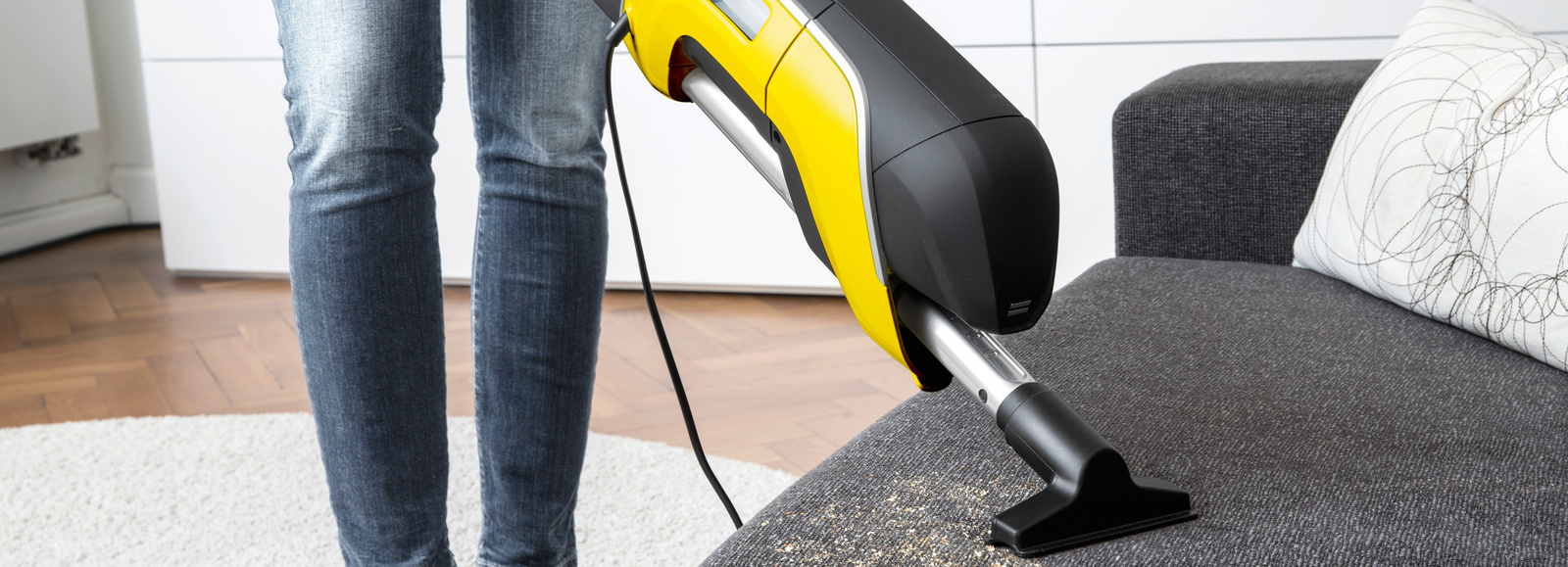
For stubborn stains: Spray extraction cleaning
Upholstery, car seats and mattresses can be cleaned deep into the fibres with a spray extraction cleaner, which can remove even stubborn stains. The principle behind it is simple: Water and detergent are sprayed on with the spray extraction cleaner and then vacuumed out of the fibres again together with the dirt. This method is particularly thorough and the drying time is much shorter compared to washing by hand.
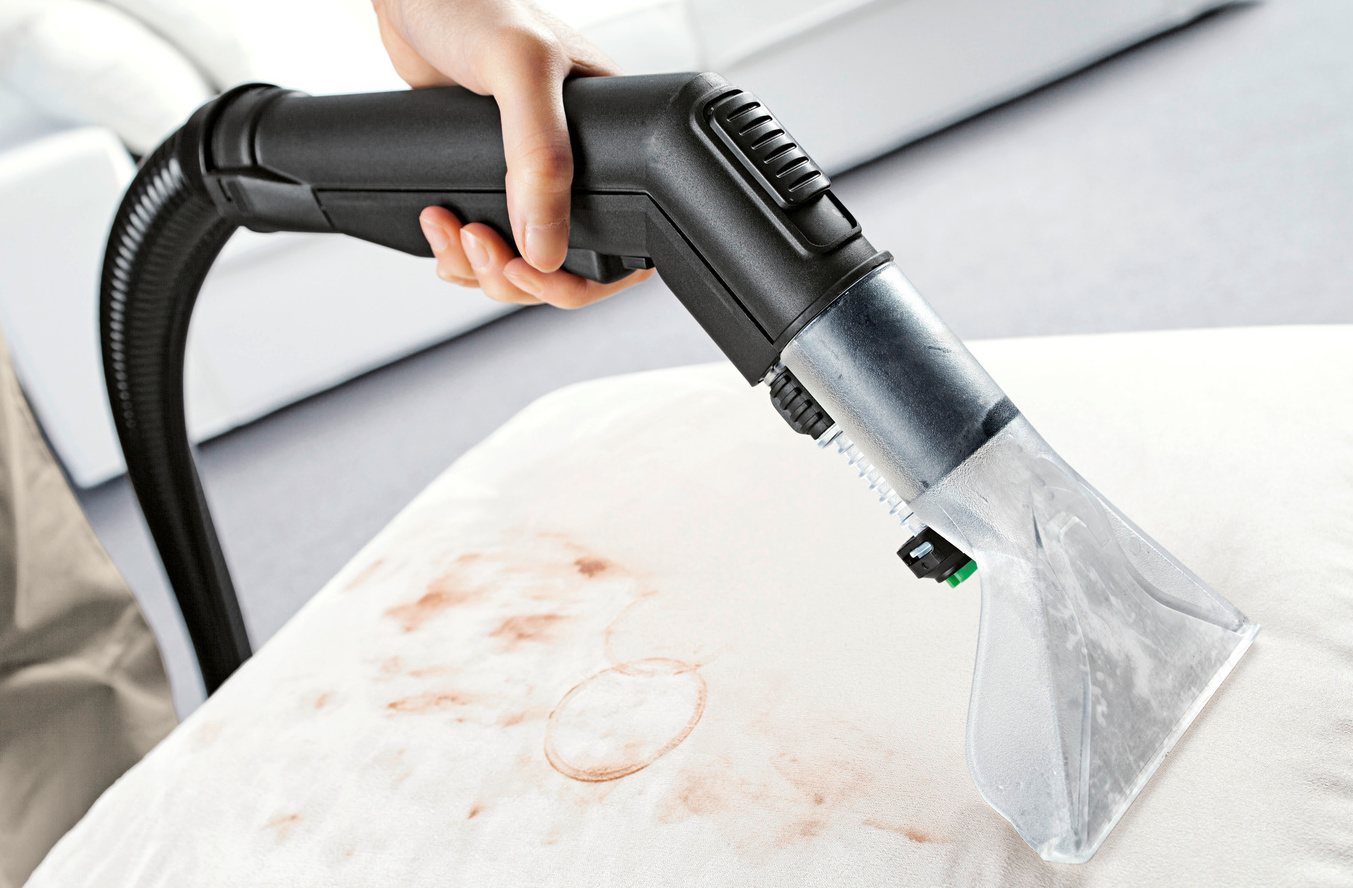
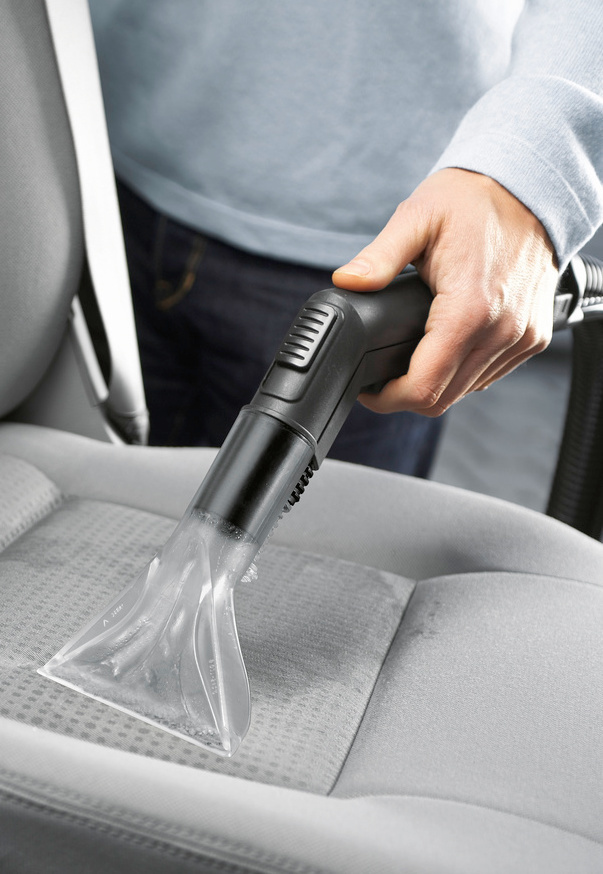
How it works:
- First, remove coarse dirt from the upholstery or car seat with the vacuum cleaner.
- Fill water into the tank of the spray extraction cleaner and add detergent for carpets and upholstery in line with the dosing instructions.
- Evenly spray on the water and detergent, keeping a distance of 10 cm between the floor nozzle and the upholstery, and leave the mixture to work for a few minutes.
- Place the floor nozzle on the upholstery, and slowly and evenly suction off the moisture.
- Always wet connected upholstered surfaces completely with water and detergent to avoid water marks during drying.
- Repeat the procedure until you can no longer extract any dirt or detergent from the fabric.
- If you need to, rinse once or twice with clear water (temperature depends on material).
- Allow ample time for upholstery to dry and make sure you ventilate the room or car well in the meantime.
- Thoroughly vacuum again once dry, ideally the next day.
- To finish off, apply textile impregnator to the fabric – this will ensure that the upholstery stays clean for longer.
Using this method, even an old sofa or car seats with significant dirt can be cleaned. However, you should always check the water resistance of the material, ideally in an inconspicuous spot, first before a spray extraction. A spray extraction cleaner can also be used to apply detergent and simultaneously suction it up again with the dirt in a single step .
Tip
You can also use a spray extraction cleaner to remove detergent residue from upholstery – for example if stains have already been treated manually or there is still some detergent in the fibres from the last time they were cleaned.
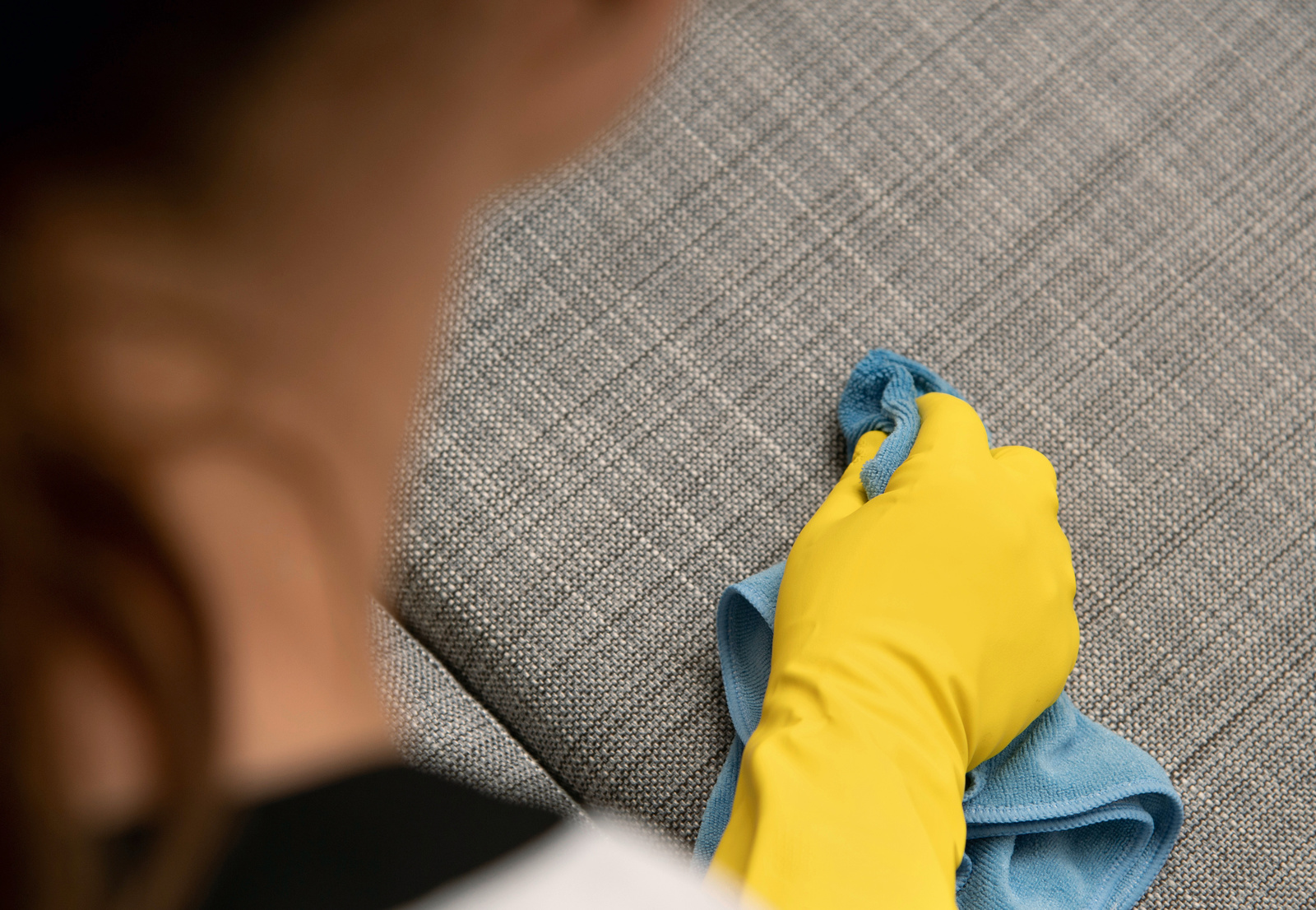
Intermediate cleaning: Spot removal of stains
Stains on the sofa or car seats can be vexing – whether they are caused by chocolate, red wine, grease or dirt from outside. They usually require swift action, after all:
- Fresh stains are easier to remove,
- Old stains are harder to identify,
- Stains can spread if they are left for too long.
For wet stains, it is generally important to act quickly and immediately soak up the stain with a clean, dry cloth. Never rub at the stain while doing so, otherwise the liquid will get deeper into the fibres and the fabric could be damaged.
90 % of all stains are soluble in water. You can quickly test this with a white cloth and lukewarm water. If the water starts to dissolve the stain, you can remove it from the fibre by making slight rotating movements with the cloth from top to bottom.
For stains that are not water-soluble, use a universal stain remover: Spray the stain remover onto a colour-fast cloth and dab the stain until it comes off. You can then rinse the area with a spray extraction cleaner to remove detergent residue from the textile fibres. It's also the case here that you should test it on an inconspicuous area to check its suitability.
Tip: Use steam to combat stains
To clean sofas and the like, steam cleaners also provide valuable assistance: To remove small stains, simply position the detail nozzle at an angle (not vertically) against the upholstery and hold the microfibre cloth next to it, then release the steam. The steam jet "blasts" the stain into the microfibre cloth, so to speak.
Recommendation: Check on an inconspicuous spot first whether the fabric reactive sensitively to the temperature. If so, the cleaning method is not suitable.

The best household remedies to remove stains
If you'd prefer to avoid chemical detergents and don't have a spray extraction cleaner to hand, you can use tried-and-tested household remedies to remove stains.

Helpful for almost all stains: Bicarbonate of soda
Bicarbonate of soda is useful in all sorts of ways around the house to remove stains from upholstered furniture, for example those caused by coffee or red wine: Sprinkle the powder on the stain, leave to work overnight and suction off the next day.
Alternatively, it can be used for wet cleaning: To do so, first vacuum the upholstery with a vacuum cleaner. Depending on how much you need, mix 1 tablespoon of powder with 1 tablespoon of water and apply the sodium bicarbonate paste to the stain. Gently rub with a damp sponge or cloth and allow to dry. The dried paste can be suctioned off the upholstery afterwards.
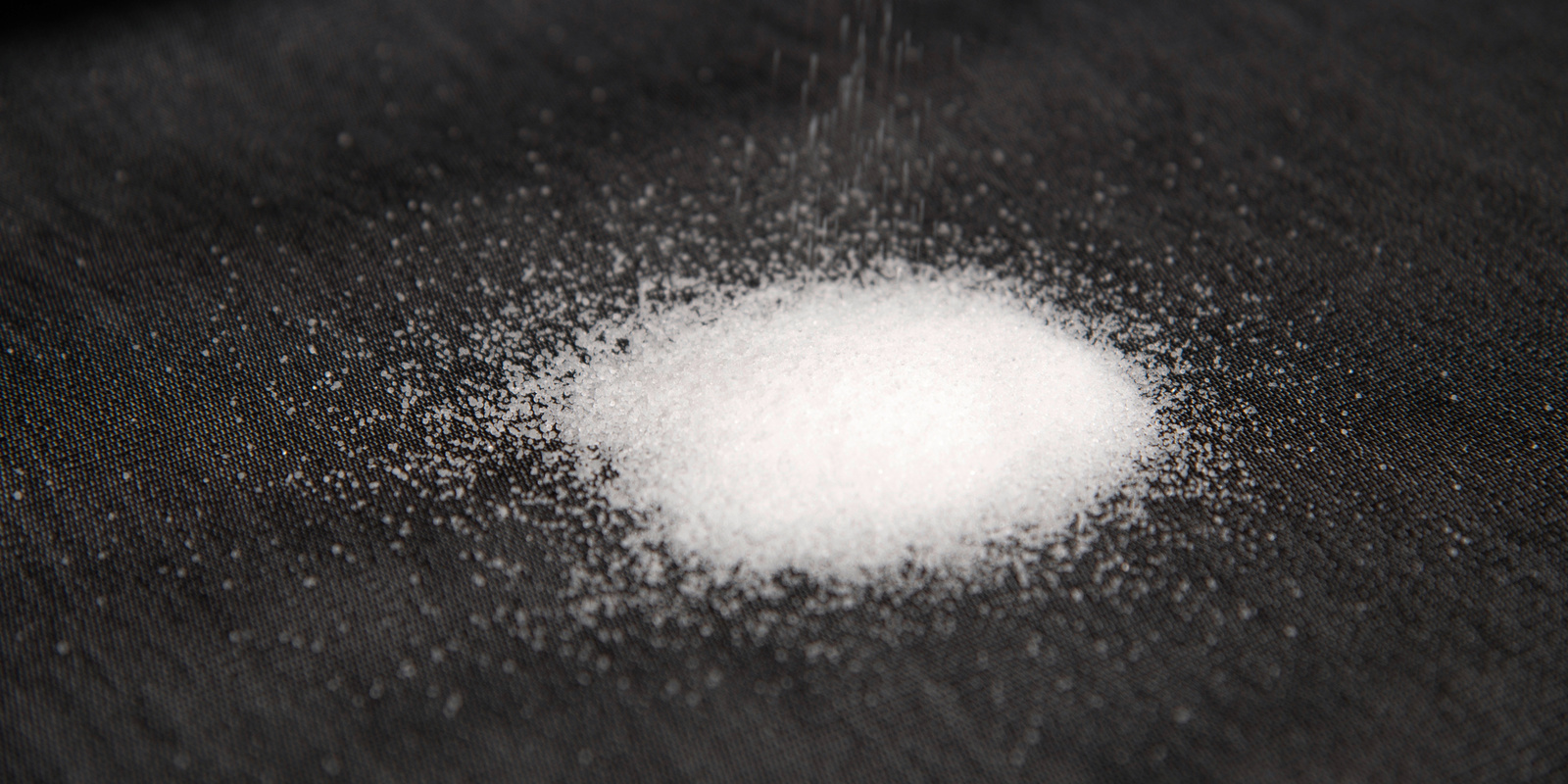
Mineral water and salt to combat red wine stains
Mineral water helps with red wine stains: Pour carefully onto the stain and then dab dry with a paper towel. Salt and cornflour also help to absorb the liquid: Add to the stain, leave to work and then suction off with a vacuum cleaner. If the stains have already dried out, lemon juice or vinegar can be a help: Just dip in a cotton cloth, moisten the stain, leave to work for around 15 minutes, then dab dry with kitchen towel. Finally, spray cold water on the area and dab dry once more.
Using lemon juice to tackle bloodstains
Even with small injuries, some blood may still end up on your mattress or sofa. If the bloodstains are very recent, they can generally be washed out with cold water. Tip: Don't use warm water because that makes the protein in blood coagulate, which binds it to the fabric fibres.
If the stains have already dried out, lemon juice can help: Mix together salt and lemon juice to form a paste and leave to work for around 30 minutes. Then remove the paste with kitchen towel, spray the area with cold water and dry again with paper. Alternatively, cleaning also works with water and baking powder, a tried-and-tested household remedy.
Using washing-up liquid or soap to combat grease stains
Warm water and grease-removing washing-up liquid or soap are often sufficient for removing grease stains from upholstered furniture: Dab fresh stains and dampen old stains with a little water. Then mix washing-up liquid or liquid soap with water and carefully distribute on the grease stain. Massage the mixture, starting at the edge of the stain. If the stain has been removed, dab everything once more with clean, warm water to remove the washing-up liquid residue.
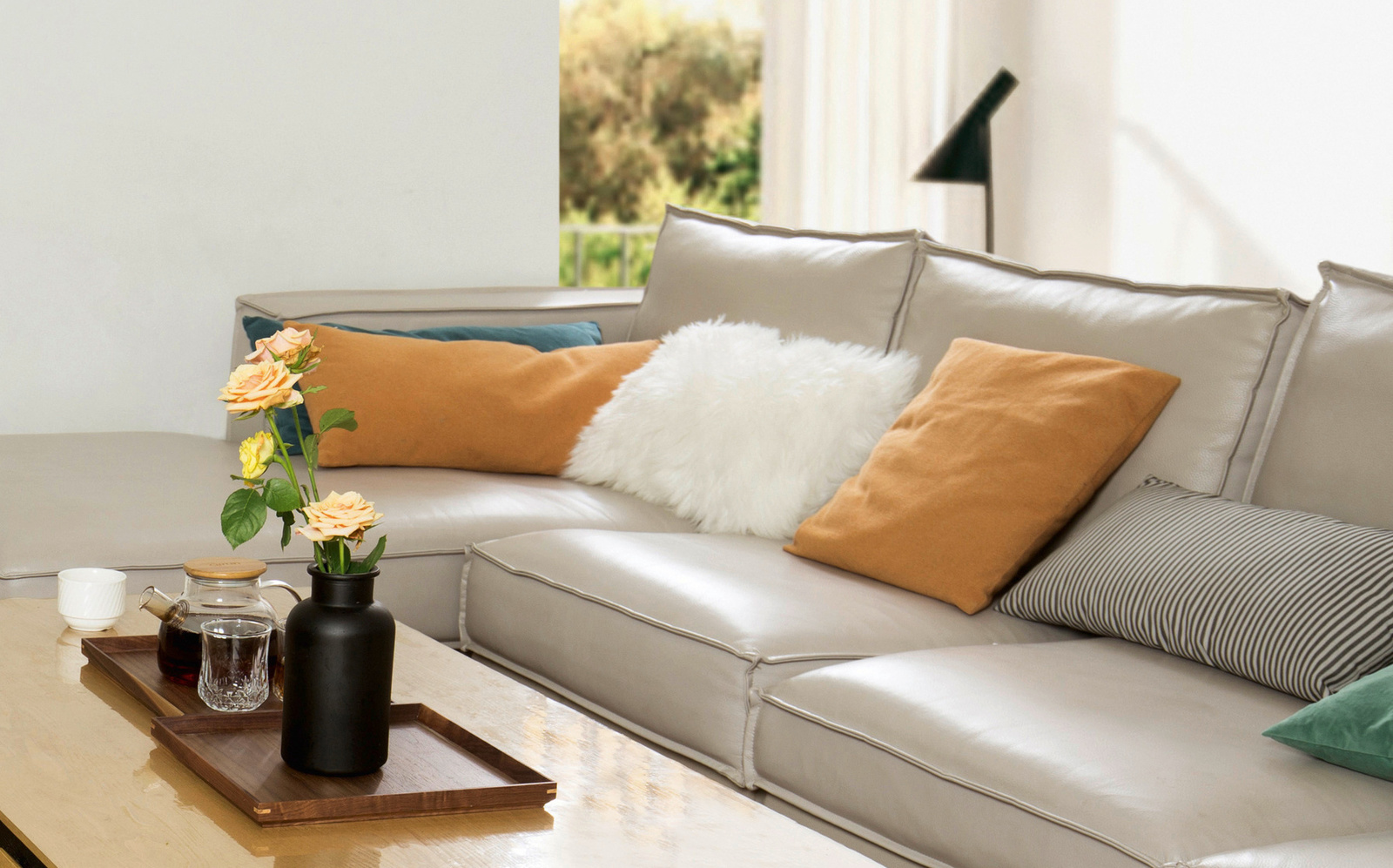
Top tips for cleaning leather upholstered furniture
Cleaning and maintaining leather upholstered furniture requires a different process from sofas, armchairs and car seats with fabric covers. Dust and crumbs can be removed with a dust cloth or carefully suctioned off with a vacuum cleaner. To clean leather, it is often enough to wipe the surface with a damp cloth. Grease-removing detergents such as washing-up liquid should not be used, as this can dry out the leather. It is better to dissolve pure hard soap (neutral soap) in lukewarm water.
Essentially, leather should never be made too damp during cleaning, and liquids, such as spilled drinks, should always be cleaned up as quickly as possible. Moreover, regular leather care with suitable products is recommended.
Tip
Clean with distilled water or water that has been boiled. This prevents lime spots.








